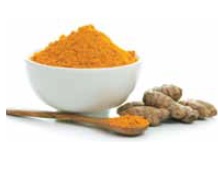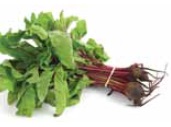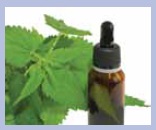
3
FOOD ALLERGIES: THE DANGERS in YOUR DINNER
FOOD ALLERGIES ARE not only common but also dangerous. Knowing which foods you are allergic to isn’t always enough, as they can show up at any place and at any time. If you have a serious food allergy—one that would cause your throat to swell and threaten your life—it is important that you be vigilant at all times to avoid encountering the food allergen, and to be prepared with life-saving medication should it become necessary.
In one study of children who experienced life-threatening asthma, more than 50 percent of the children in the group were found to have food allergies, when compared to only 10 percent in the control group.1 These results demonstrate that life-threatening asthma attacks can actually be triggered by food allergies.
Use of an elimination diet, in which you eliminate possible triggers one by one, can help you to learn which foods can trigger an asthma or allergy attack. Incidentally when you eat healthy, nourishing foods on a daily basis, your immune system will be healthier and more able to ward off toxins and allergens, without the severe inflammation of an asthma or allergy attack.
The following foods have been proven to boost your immune system, thus helping to prevent allergy attacks:
• Fresh fruits and vegetables; fresh vegetable juices
• Cold-water, wild-caught fish • Extra-virgin olive oil
• Flaxseeds
• Herbal spices such as rosemary, ginger, and turmeric
Additionally you might consider changing to a vegetarian diet, if that is appropriate for your blood type. People who eat only fruits and vegetables rarely encounter any food allergy symptoms.
Children are most commonly affected by food allergies. They are usually outgrown by adulthood, but some allergies, especially those involving peanuts and shellfish, can last a lifetime, says Talal M. Nsouli, MD, clinical associate professor of pediatrics and allergy/immunology at Georgetown University School of Medicine and director of the Watergate and Burke Allergy and Asthma Centers.2
There is a genetic component to food allergies. “Both my son and daughter have allergies,” says Patricia Davis, MD, MSPH, president of Healthy U in Columbus, Ohio, who is also a preventive medicine specialist. If one of your parents has a food allergy, you have at least a 20 to 30 percent chance of having a food allergy, and if both of your parents are affected, your chance of having a food allergy yourself rises to 40 to 70 percent.3
Breastfeeding infants is one way to prevent food allergies in children later in life. Breastfed babies receive intestinal flora from their mothers’ milk, which helps build their immune systems and prevents later allergies, says Jose Saavedra, MD, medical and scientific director of Nestlé Nutrition USA, and associate professor of pediatrics at Johns Hopkins University School of Medicine and Bloomberg School of Hygiene and Public Health in Baltimore.4
Little Bites Can Cause Big Problems
If you have only a mild food allergy, you might be able to eat a small bite or two of the allergen infrequently. But most people with food allergies experience severe symptoms when even a trace amount of the allergen is encountered. These symptoms can even bring about a life-threatening condition called anaphylaxis. Because of the extreme risk involved, most doctors would advise those with severe allergies to keep epinephrine syringes handy wherever they eat, all of the time. Epinephrine is known to stop an anaphylactic attack right away and prevent anaphylactic shock.
The best thing you can do to avoid food allergies is to avoid the offending foods altogether. Be sure to read the labels on any food you buy. If you are allergic to peanuts, for example, don’t just look for the word peanuts but also watch out for any peanut powder or peanut oil that might have been used in the production of the food. And keep reading those labels! Food companies frequently change their “recipes,” so a food that doesn’t affect you today very well could tomorrow.
Even when you know what foods you are allergic to—and you can control the ingredients in your dinner at home—it is a bit more difficult to avoid offending foods when you eat out. If you are eating at a restaurant, ask the waiter or maître d’ to check with the cook to be sure your offending food is not used in any way. Don’t forget to inquire about oils and spices, as well.
Eating alkalizing foods is also a great way to restore your health. Many diseases such as cancer thrive in an acidic state. Take away the acid, and they don’t do as well. An alkaline diet also boosts your energy level, improves skin, reduces allergies, sustains the immune system, and enhances mental clarity.
To give your body a great start in rebalancing your pH, make sure 60 percent to 80 percent of your diet is made up of alkalizing foods such as green vegetables, raw juices, grasses such as wheatgrass, fresh fruit and vegetables, raw seeds and nuts, and sprouts. Greatly limit or avoid your consumption of acid-forming foods such as meat, dairy products, chocolate, sweets, bread (gluten) and all other yeast products, alcohol, carbonated drinks, sports drinks, coffee, and black tea.
Optimizing liver function through seasonally cleansing and detoxifying your liver will reduce allergies and improve overall health. A liver cleanse focuses on cleansing, protecting, and nourishing the liver. The following foods and supplements can help you cleanse and support your liver. They are part of a liver cleanse program I describe in my book Juicing, Fasting, and Detoxing for Life, which contains recipes including a morning citrus-ginger-olive-oil shake, beet salad, carrot salad, and mineral broth, as well as a menu plan for a seven-day cleansing program. For quick reference and convenience I have also included some liver-supporting juices, smoothies, and food recipes in chapter 7.
• Liver-friendly vegetables. Juice and eat an abundance of these liver-friendly vegetables during your detoxification program: artichokes, beets, broccoli, brussels sprouts, cabbage, carrots, cauliflower, celery, chives, cucumber, eggplant, garlic, green beans, kale, kohlrabi, lettuce, mustard greens, okra, onion, parsley, parsnips, peas, pumpkin, spinach, squash, and sweet potatoes (yams).
• Milk thistle (silymarin). Milk thistle is an herb that protects the liver. Silymarin is the active ingredient in milk thistle, and because of its antioxidant properties, it helps prevent free-radical damage to the liver.
• Artichoke powder. A chemical found in artichoke that gives it a bitter taste actually aids your liver in the detoxification process. It helps increase bile production and strengthens the bile duct so that it’s better able to contract. The phytochemicals in artichokes also strengthen liver cell walls, protecting them from damage. It also helps break up and mobilize fat stored in the liver, making it useful for lowering cholesterol as well.
• Turmeric. The key component in turmeric is curcumin. This golden spice helps cleanse the liver, purify the blood, improve digestion, and promote elimination. It stimulates the gallbladder for bile production and scavenges free radicals.

• N-acetyl-L-cysteine (NAC). NAC protects the liver from free-radical damage caused by environmental pollution, radiation, cigarette smoke, and alcohol. Natural health practitioners often prescribe it for patients with mercury or heavy metal toxicity and environmental or dental amalgam mercury-filling toxicity because of its ability to bind to these toxins, allowing your body to excrete them.
• L-methionine. L-methionine is an amino acid used by the liver to create glutathione. It can help raise glutathione levels, thus improving the natural detoxification functions of the liver.
• Beet leaf and black radish. Beet leaf and black radish assist the liver’s detoxification process and improve carbohydrate and fat metabolism. Beet leaf helps normalize the pH of the blood and stimulates bile flow, which can be helpful in lowering cholesterol. Black radish is rich in vitamins and bioflavonoids, which support heavy metal detoxification.
• Dandelion. Dandelion has been used for centuries for general detox. Herbalists and naturopathic doctors particularly like dandelion for cleansing the liver. It strengthens the liver by promoting bile secretion and provides a gentle cleansing action in the elimination of metabolic waste.
• Garlic. Love your liver with garlic. “Use garlic with equal abandon,” says Dr. Oz. “In addition to adding oomph to almost any dish, it activates liver enzymes that support your filtration system, and it’s good for another vital organ: your heart.”5 Just a small amount of this pungent white bulb has the ability to activate liver enzymes that help your body flush out toxins. Garlic is rich in allicin, the active ingredient, and selenium, two natural compounds that aid in liver cleansing.
• Beet juice. Beets have been used in naturopathic medicine to cleanse and support the liver. Beet juice, made with the root and the leaves, is an integral part of my seven-day liver-cleansing program. It’s high in sugar, so always dilute with green veggies like cucumber and dark leafy greens. Also, beet salad is another key part of the program and can be made with the leftover beet pulp and a lemon juice–olive oil dressing. (The recipe is in Juicing, Fasting, and Detoxing for Life.)
• Carrot juice. Carrots help stimulate and improve overall liver function. They can be juiced as part of the liver-cleansing cocktails. The leftover pulp is made into a cleansing salad with a lemon juice–olive oil dressing. (The recipe is in Juicing, Fasting, and Detoxing for Life.)
• Dark leafy green juice. One of our most powerful allies in cleansing the liver, leafy greens can be juiced, eaten raw, and lightly cooked. Particularly high in plant chlorophyll, greens literally suck up toxins from the bloodstream. They also halt the progression of hyphae, the long, branching structures of yeast and fungus that cause it to spread systemically throughout the body. And with their distinct ability to neutralize heavy metals, chemicals, and pesticides, greens offer a powerhouse of cleansing for the liver.
Excellent greens to juice include beet tops, arugula, dandelion greens, spinach, mustard greens, kale, chard, collards, kohlrabi leaves, and chicory. Green juice will help increase bile flow, which will help remove waste from the organs and blood.
• The olive oil flush for liver and gallbladder cleansing. The olive oil flush is used to purge out stones from the liver and gallbladder. Follow the recipes and program in Juicing, Fasting, and Detoxing for Life.
NOTE: If you have a liver disease, consult your doctor first.

WILD FOODS AND LIVER DETOXIFICATION
(contributed by my dear friend Nina Walsh, ND)
Wild grown greens and herbs offer us some of the most cleansing, medicinal, and nutrient-dense foods we could find. And they are free! Here are some characteristics of wild foods:
• They are organic, clean, resilient, resistant to diseases, and nutrient and antioxidant rich.
• They are grown in rich soils and have greater access to and quality of nutrients.
• They come in a variety of species and offer a wide variety of nutrients.
• They have diversity of flavor—bitter, pungent, sour, bland, sweet, and salty.
• They are time-tested—wild plants have been used for thousands of years.
• They have enzyme systems and mechanisms for optimal digestion.
• Our human genome (inherited genetic information) is responsive to wild foods.
• They follow cycles and rhythms of nature, like our bodies.
• They cleanse and nourish our bodies and support optimal health.
• Specific plants cleanse and support specific organs.
Stinging Nettles
The stinging nettle is one of the first plants to come up in early spring. It is used traditionally for body cleansing. People who observe Lent in the Eastern Orthodox tradition abstain from heavy animal foods for about six weeks before Easter and eat spring herbs.

Nettle is a great tonic with unique healing and cleansing qualities. It flushes out toxins and cleanses the entire system. It’s best known to detox the kidneys. It helps discharge metabolic wastes, such as uric acid crystals. And it’s a good diuretic/aquaretic, meaning it will not waste electrolytes but will get rid of excess water. It gently tones the body, purifying the blood. It also helps cleanse the lymph and rid the body of the residues of months of sedentary winter lifestyle and heavy food. And it replenishes the body with nutrients—it’s rich in iron, calcium, beta-carotene, and vitamin C.
In addition to all the cleansing it does, the tea of nettle tops also stimulates the formation of red blood cells. Further, it can lower blood sugar levels and is indicated for type 2 diabetics. This tea can be taken safely by anybody, though it may be particularly supportive for women during puberty, menopause, or pregnancy.
To make the best use of spring nettles, gather young leaves before the plants produce seeds. Use gloves to prevent stinging. You can add them to green smoothies and juice. They will not sting once they are juiced or blended. You can cook them; they are delicious in omelets, sautéed greens, nettle chips, soups, and teas. Also, you can add it to baths, body wash, and hair rinses.
Stinging Nettles Omelet
Start with a bunch of chopped young nettle leaves (use rubber gloves to prepare the nettles). Sauté with shallots or onions in 1 tablespoon of olive oil or coconut oil. Once the nettles are lightly cooked, they’ll no longer sting. Add ½ cup sautéed sliced mushrooms and 2 eggs and finish cooking.
Dandelion
Dandelion is the quintessential digestive herb. Its bitter components stimulate production of stomach acid, enhance appetite, support action of the liver in breaking down nutrients, and cleanse the body of toxins. As a liver detox herb, it helps regulate hormones and alleviate hormonal ups and downs, such as those associated with the female menstrual cycle or menopause, and also low vitamin D levels.
One of the best herbs to use for a spring cleanse, dandelion acts as a cleansing agent on both the liver and the kidneys. It helps to purify the blood and flush out uric acid crystals that accumulate from eating a diet too rich in animal proteins and other acid-producing foods; it restores the alkalinity of the blood. Dandelion enhances bile flow. It also reduces and prevents inflammation in the liver and gallbladder. It contains choline, a substance that helps prevent fat from being deposited in the liver. Dandelion roots are particularly beneficial for the liver, while the leaves have a more pronounced effect on the kidneys as an aquaretic (it does not deplete potassium but actually adds potassium to the body). It is also rich in many other vitamins and minerals, including vitamin C, beta-carotene, calcium, iron, manganese, and phosphorus. Avoid picking dandelion leaves from lawns where chemical fertilizer was used. It is always best to collect wild foods in clean areas, away from traffic and pesticides. Every part of this plant can be used as food and medicine. Dandelion can be juiced and added to smoothies. (See Dr. Nina’s Sweet Dandelion Smoothie in chapter 7.) For salads, it’s best to mix with other milder-tasting spring greens. However, if you don’t mind a slightly bitter tang, you can try a dandelion salad with 1 grated carrot and 1–2 cloves garlic. Add a fruity vinaigrette or a sweet and sour dressing made with yogurt, lemon juice, pepper, salt, garlic, and a little raw honey. (Or see Dr. Nina’s Russian Cabbage Slaw in chapter 7.) Dandelion especially complements boiled eggs and cress type herbs. Like any greens, dandelion leaves and roots can be sautéed or stir-fried. Leaves can also be blended for soups. And you can make “coffee” from roasted roots.
Burdock
One of the best plants for cleansing, burdock is a wonderful digestive herb that supports liver function and detoxification, reduces liver inflammation, heals liver cells in fatty liver disease, and stimulates stomach acid production. It helps lymphatic flow and elimination of wastes from the tissues through the lymphatic system. It is a gentle diuretic and reduces water accumulation in extremities and around joints. It promotes healthy bowel flora and is healing for the intestinal lining. It’s also a great source of fiber, protein, vitamins, and minerals.
It can be added to green smoothies and juices. You can use it as you would any root vegetable: sautéed, mixed with greens; added to puréed vegetables; or used in soups. It can be dehydrated as chips or made into a tea. You can also use the leaf and root for infusion for baths. To cook burdock with vegetables: Sauté ½ chopped medium onion in olive oil or coconut oil. Add 1 chopped burdock root, 1 chopped carrot, 1 chopped small beet, 2 chopped Jerusalem artichokes, 1 cup chopped broccoli or another green vegetable (like nettles), 2–3 cloves of chopped garlic, and 2–3 sprigs parsley. Sauté the onion until translucent and then add the rest of the vegetables with chopped garlic. When the vegetables are lightly cooked, add chopped parsley. Salt and pepper to taste. Sprinkle with lemon juice.6
Foods to avoid while cleansing your liver
Omit meat, dairy, sweets, alcohol, eggs, refined foods, sodas, all oils and spreads except olive oil and coconut oil, and all nonorganic foods.
FOOD ALLERGIES AND THYROID FUNCTION
When it comes to food-related allergies that impact the thyroid gland, it is not like eating a nut or a shrimp and getting an immediate reaction. The type of reaction that disrupts thyroid function is a delayed interaction with food antigens that can occur up to four days after eating the food. The two most prevalent food-related reactions come from dairy and wheat. These two foods are known in alternative medicine to be highly correlated with autoimmune thyroiditis. Dairy and wheat gluten are often removed from diets of thyroid patients with good success. The Journal of Clinical Gastroenterology demonstrated that those allergic to gluten had a much greater risk of thyroid abnormalities.7